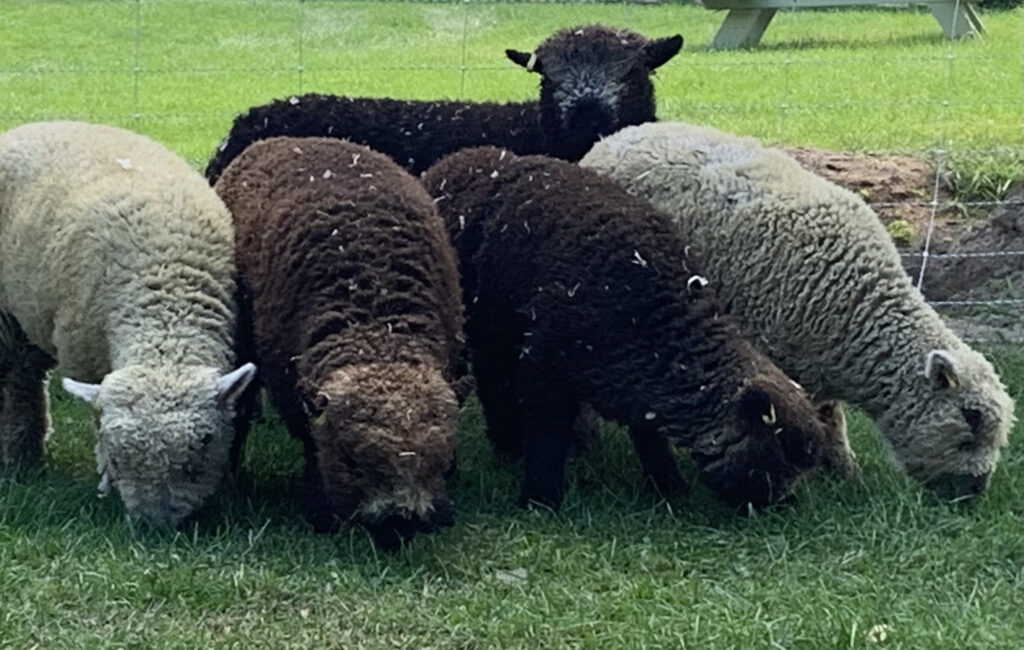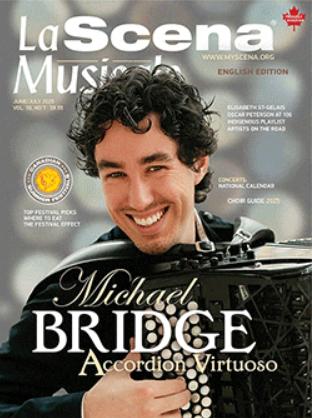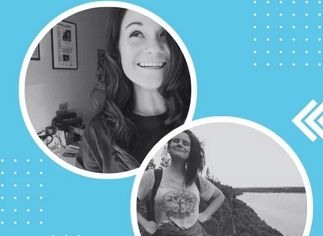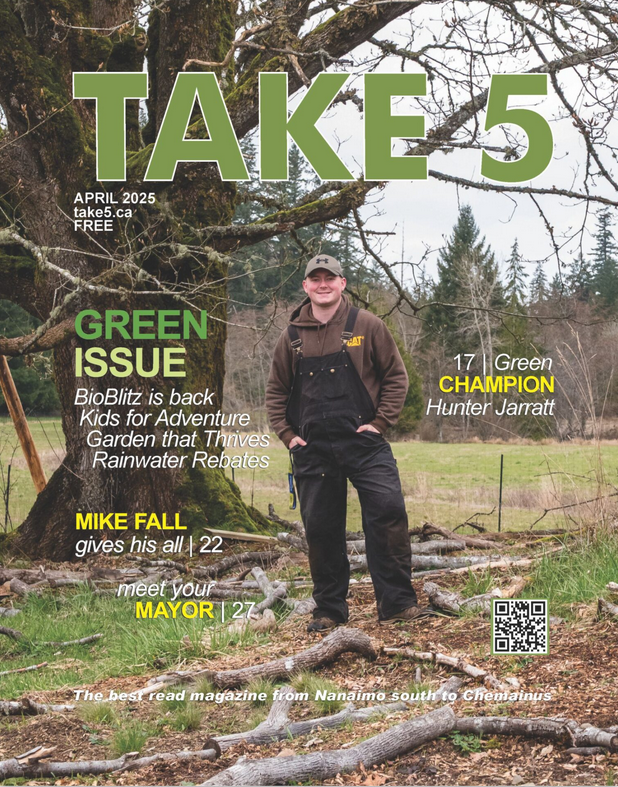By Karri Munn-Venn for Digits & Threads, 19 January 2022
“Hey Karri, you need to look at this.”
It was the perfect Saturday afternoon: chores done and kids happily entertaining themselves. I was cozy indoors, listening to a book and knitting, on a cold, grey February day.
I looked up to see a real estate listing on my husband Trefor’s iPad. It had been many months since we’d talked about moving from our Ottawa home, but within minutes we were in the car and on our way to west Quebec.
Forty-five minutes later, captivated by the vast, snow-covered hillside, we spotted the “eggs” sign, pulled over, and knocked on the front door of a simple wooden bungalow.
“Hi!” I said, “We’d like to buy some eggs, and maybe your house.”
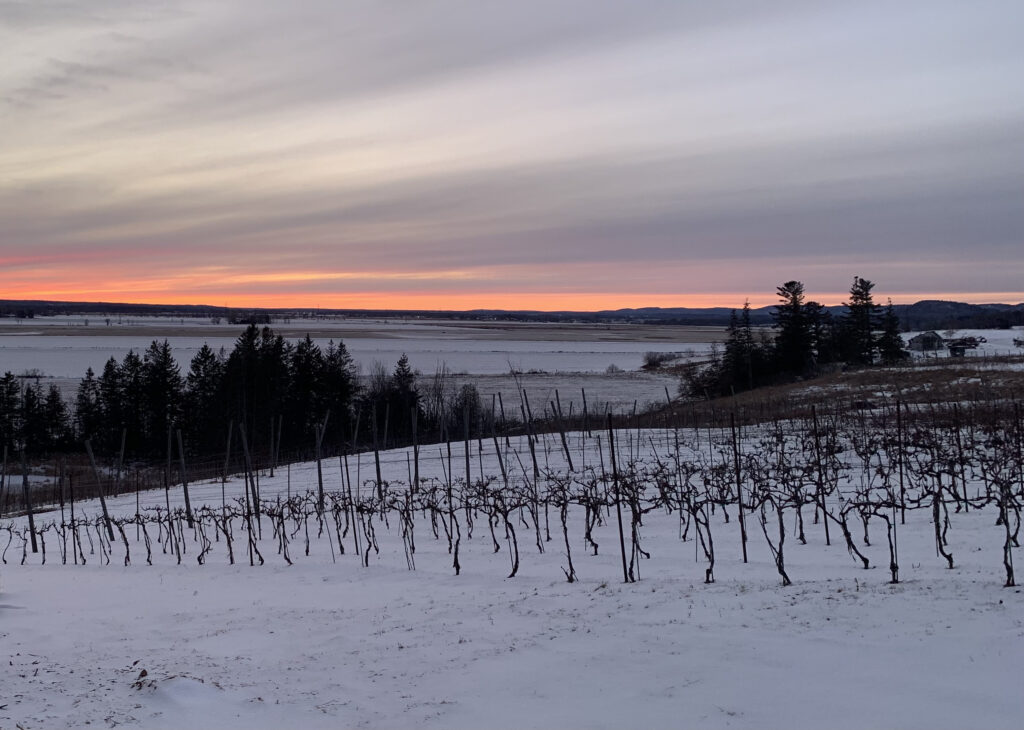
The man at the door burst out laughing. He told us they were out of eggs, and that his wife wouldn’t be okay with us coming inside, but we were welcome to look around the property. By Monday evening, they’d accepted our offer on what would become Fermes Leystone Farms: Ten hectares (twenty-five acres) of paradise on Algonquin territory at the edge of the Gatineau Hills, with 11,000 grapevines, a dozen chickens, a hay field, a pond, some woods, and about four acres of fallow land.
To many, our move in 2020 looked like a huge leap. Even our children thought it came out of nowhere. Yet for Trefor and me, it felt like the best, easiest, and most natural step we’d taken in our 30+ years together. I first learned to knit as a teenager, but it didn’t stick. Years later, I spotted “the perfect sweater” and decided I needed to knit one for myself. So I did. Soon, I was never-not-knitting. I relished long car trips and quiet afternoons. I made ALL.THE.THINGS for my family and closest friends. I discovered the joy of working with real wool. The woolly wools, the next-to-the-skin-soft wools, and so many in between. The feel of these fibres in my hands and against my skin was one thing, but I was also becoming increasingly aware of the social and environmental impact of fashion. The synthetic yarns, the water- and chemical-intensive methods used to process natural fibres, and the vast distances wool often travels between the sheep and the maker.
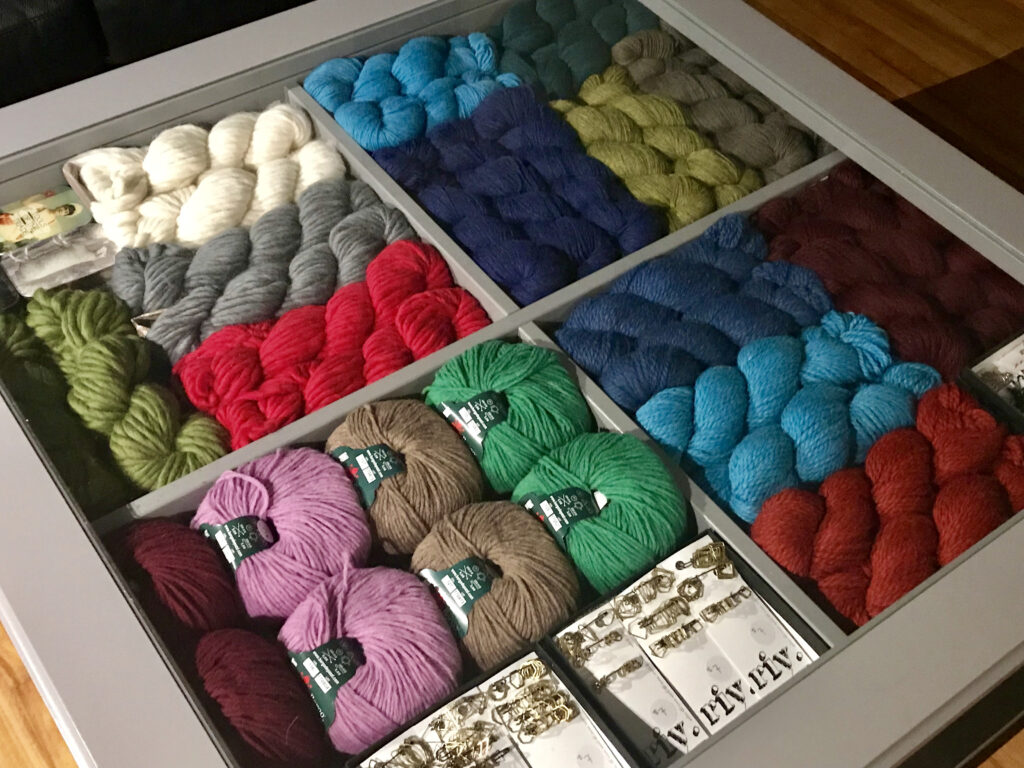
In 2017, I began attending fibre festivals. I took classes, met industry rock stars, and generally upped my knitting game. That same year, I started teaching knitting classes out of my living room. Within six months I had my own supply of quality needles and some beautiful yarns. Our living room had become a sweet little yarn studio.
Now, after twenty years as an avid knitter, teacher, and enthusiastic advocate for natural, sustainable, local wool, I wanted my own sheep.
We learned that some Canadian vineyards graze Southdown Babydoll sheep (also known as Olde English Southdowns). I had never heard of Southdown Babydolls and was delighted to discover that this miniature breed (reminiscent of an Ewok) produces a fleece comparable to Merino.
Leia, Rey, Soka, Rose, and Dune—our Star Wars sheep—arrived in September 2020. I was beyond excited. It was only as the truck pulled up that I realized I’d never interacted with a sheep! We managed to get them settled into their little barn and delighted in their cautious, curious, exploration of their new home.
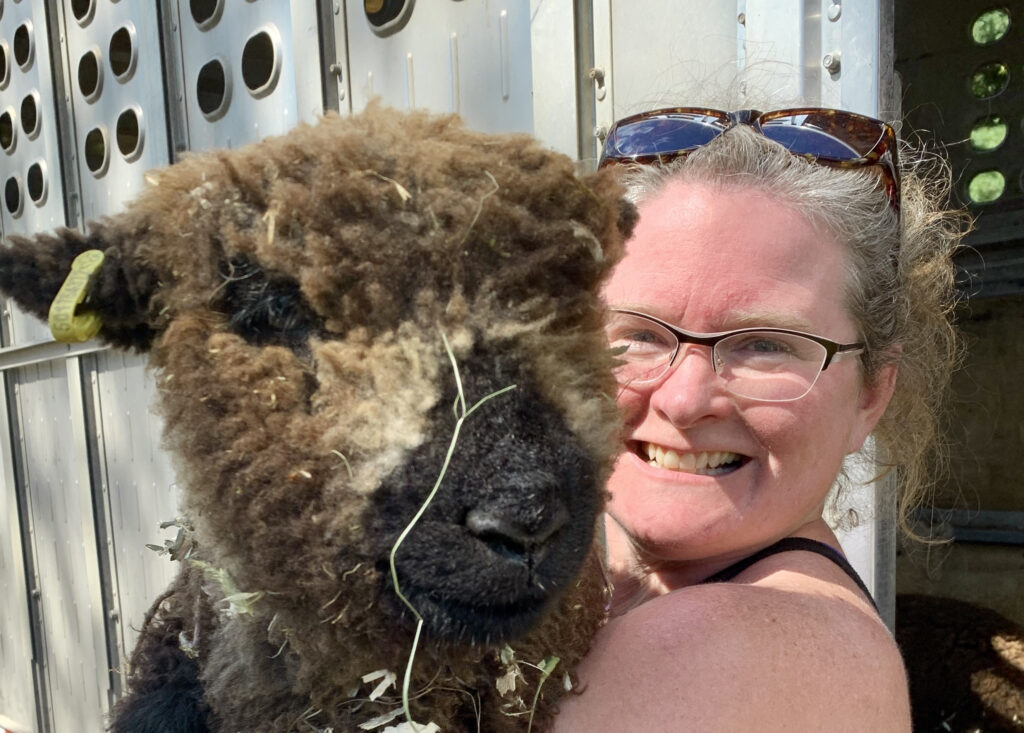
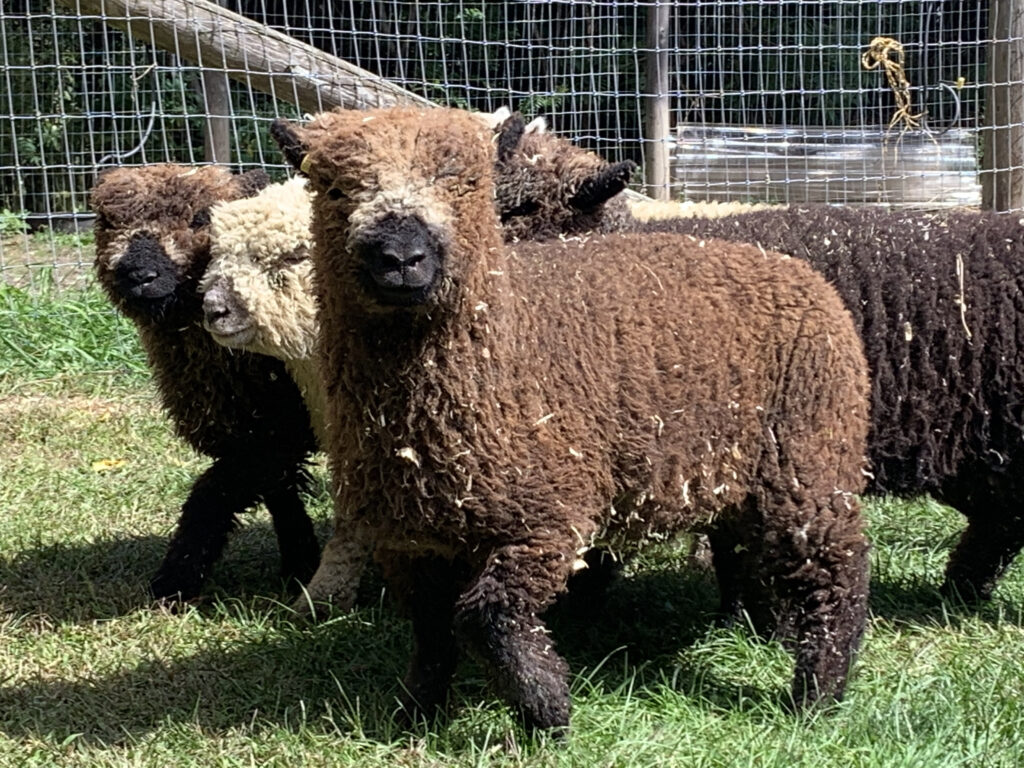

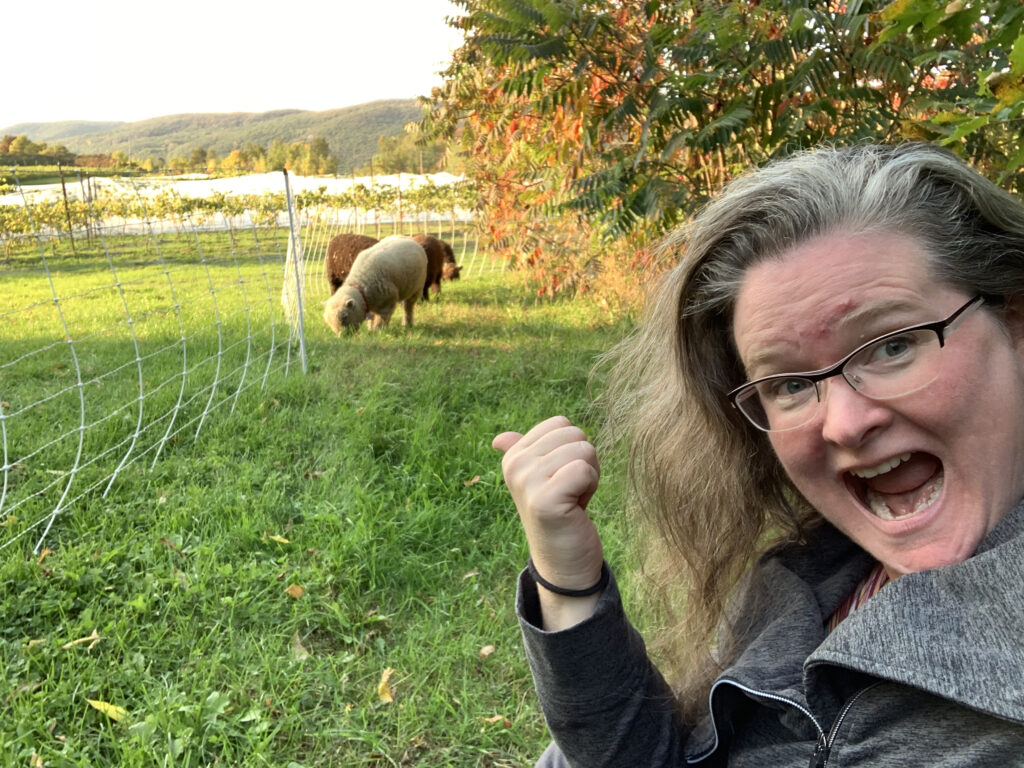
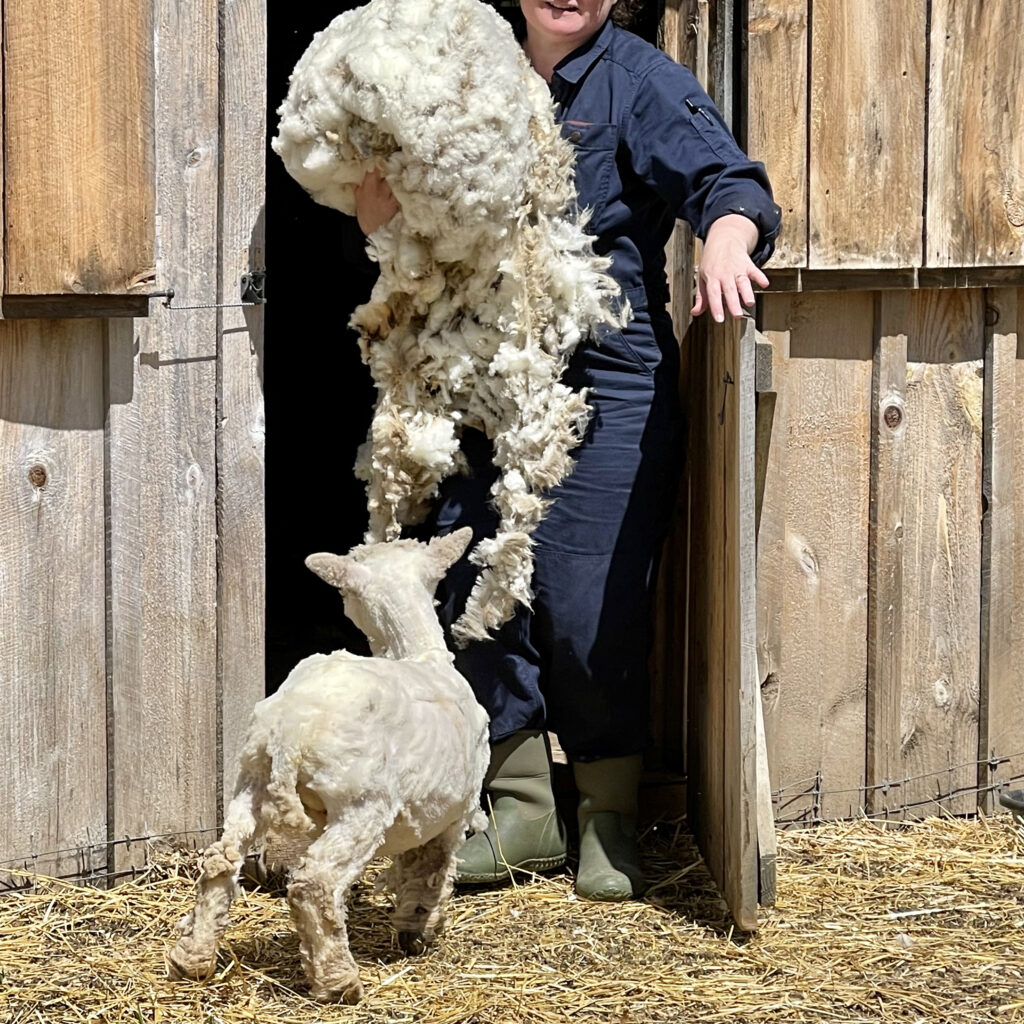
I happily spent time with my flock as often as I could. By December, I’d become fairly adept at handling them and had learned how to trim their woolly faces and maintain their hooves. I began preparing for shearing and processing.
I discovered that many local sheep farmers simply toss their fleeces. There are no fibre mills in the province of Quebec, and as far as I could tell, none of the Ontario mills had the equipment to process the short staple length of the Southdown Babydoll wool. Fortunately, by shearing time I had connected with Anna Hunter at Long Way Homestead wool mill in Manitoba. And, at the end of a hot day in May, I had five naked sheep and about 15 pounds of gorgeous, squishy fleece. With my fleeces skirted, packed, and ready to ship, I felt that I’d really become a wool farmer.
The obvious next step was to get more sheep. In June, we welcomed our ram, Gordon Ramsay, and then three more ewe lambs and three young wethers.
While we were getting ready for breeding season, we learned of another flock, north of Toronto, looking for fresh pastures. Two days later, Hope, Gabi, Gulliver, Ivan, and their guardian llama, Loretta, were on their way to us.
This new crew are part of a “breed-up program” to introduce the Swiss Valais Blacknose into Canada. Valais Blacknose sheep produce long, coarse wool, better suited to carpets than handknits. Their size and reach mean they are not well suited to a vineyard. But they are very beautiful, and truth be told, I can get excited about wool of any description!

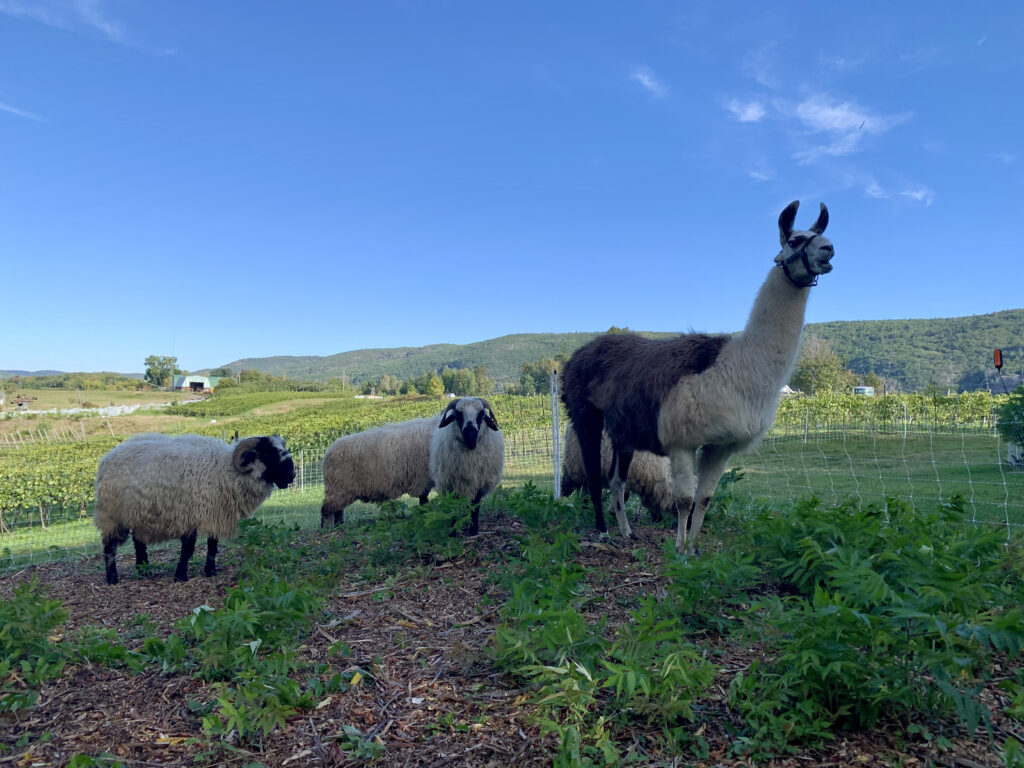
The two ewes are F1s: 50 per cent Valais Blacknose and 50 per cent Scottish Blackface. We’ve selected some “maximum points” semen and have secured a visit, at the end of January, from a vet who specializes in artificial insemination. If all goes well, we’ll be lambing in April and again in June.
By all accounts, summer 2022 will be an exciting time at Leystone Farms. In the meantime, I’ll be leaning in to all of my favourite things. As soon as public health measures permit, knitting classes and a regular in-person knit night will resume in our new vineyard-side studio. I’ll be visiting as many local sheep farms as possible in an effort to improve my shepherding. And finally, I’ll be knitting!
We all know that yarn mail is the best mail, and the box of yarn that is currently on its way back from Long Way Homestead is the most exciting yarn mail I’ve ever anticipated! I don’t yet know exactly what it will become, but you can bet that I’ll be at a Digits & Threads Studio Hours in the not-too-distant future saying, “Hey friends, you need to look at this!”
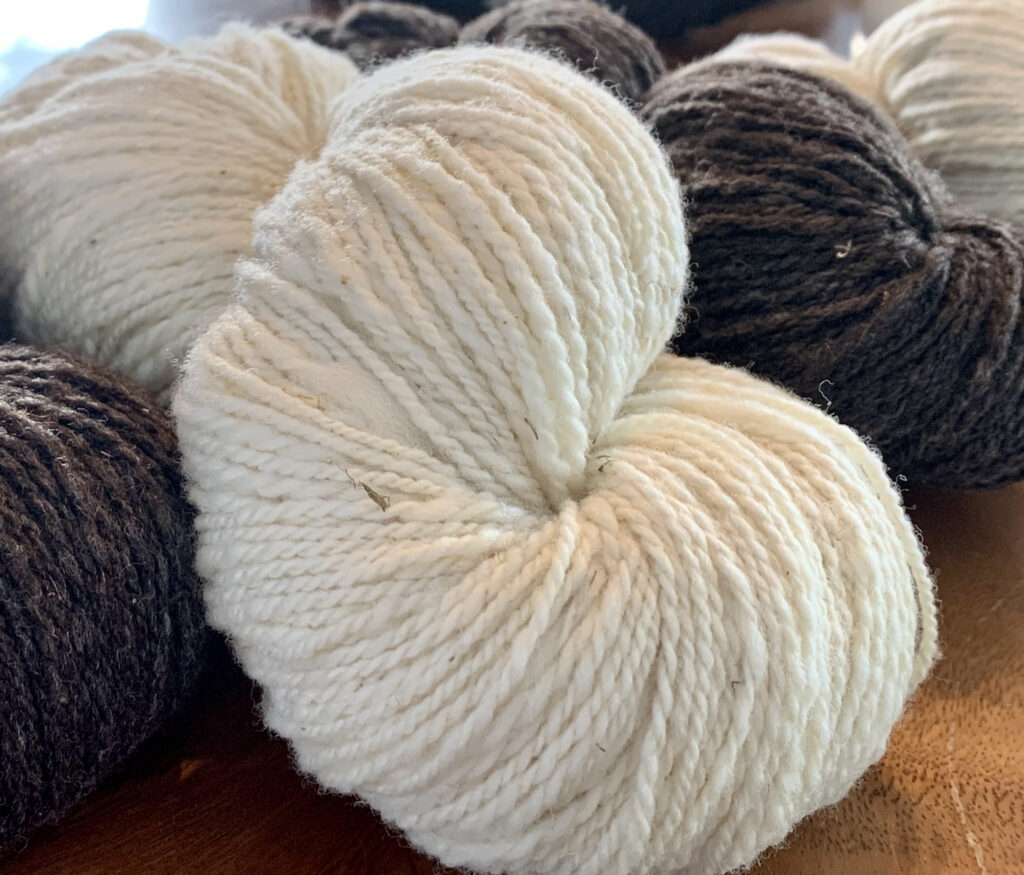
Glossary
F1s: A breed-up program begins with a “foundation ewe,” that is a female sheep with similar genetics to the target breed. She is artificially inseminated with purebred semen from the target breed. The resulting lamb is 50 percent foundation and 50 percent target and is referred to as an F1 (first cross). F1s crossed with purebreds result in F2s, which are 75 percent target breed. F3s are 88 percent and F4s are 94 percent. F5 are 97 percent target breed and are considered purebred.
Staple length: the average length of the fibre/wool, measured from the shorn end (closest to the sheep) to the tip.
Skirting: the process of removing dirty and matted fibres as well as any vegetable matter (like straw) from freshly shorn fleeces.
Wether: a castrated male sheep.
All images credit Karri Munn-Venn.


